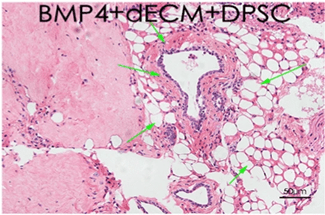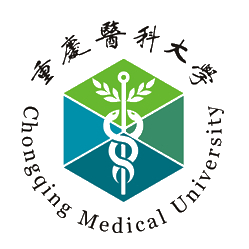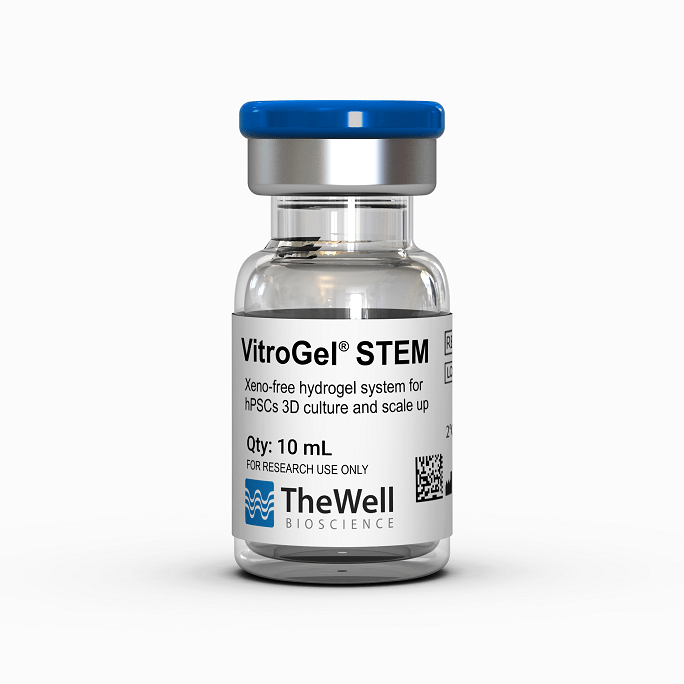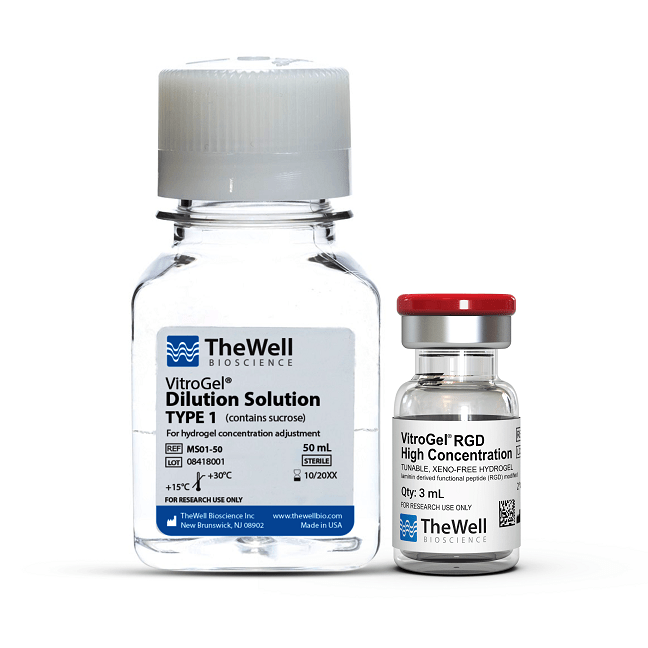Research Highlights
New Findings Elucidate BMP4 and Decellularized Pulp Extracellular Matrix Synergy to Accelerate Tissue Formation by Stem Cells

Institution:

Stomatological Hospital of Chongqing Medical University, Chongqing Medical University. People’s Republic of China
Team:
Tan Q., Cao Y., Zheng X., Peng M., Huang E., and Wang J.
Application:
Identification of a novel synergistic relationship between BMP4 and dECM to accelerate pulp-like tissue formation by DPSCs in vitro
Disease Model:
Dental pulp stromal cells
Hydrogel:
VitroGel® 3D
Young, permanent teeth frequently suffer from dental trauma, pulp, and/or periapical lesions, and the current clinical treatments (drugs, surgeries) have many shortcomings. Pulp regeneration via stem cells has recently been discovered as a promising alternative for the treatment of periapical and pulp disease in these teeth. This manuscript aimed to expand and elucidate this mechanism by characterizing the decellularized dental pulp extracellular matrix (dECM), including the relationship between bone morphogenetic protein 4 (BMP4) and dental pulp stromal cells (DPSCs) and their ability to regulate pulp regeneration. Dental pulp was isolated from healthy third molars, decellularized, and a series of molecular experiments were performed, including transplantation of DPSCs mixed with dECM and BMP4 into nude mice. Interestingly, expression of osteogenic and angioblastic genes and pulp-like tissue formation was enhanced in vivo following transplantation, indicating dECM enhances DPSC proliferation. Likewise, the transplantation experiments illustrate a novel synergistic relationship between BMP4 and the dECM to accelerate pulp-like tissue formation by DPSCs in vitro.
To demonstrate the BMP4/dECM-mediated acceleration of pulp-like tissue formation by DPSCs, human DPSCs (from passages 3-6) were first isolated and characterized. Cells were initially infected with BMP4 adenovirus to transiently overexpress BMP4. Following the initial human DPSC characterization and isolation, morphological observations using H&E and DAPI staining were conducted over 7 days to identify any proliferation differences between the DPSCs vs. the DPSC + dECM groups. The authors demonstrated a clear increase in proliferation status in the DPSC + dECM group compared to the DPSC group, indicating the dECM promotes proliferation. This demonstration was made possible using the VitroGel 3D hydrogel system, which provided the structure and function of a natural scaffold, enabling reconstruction and stimulation of the original microenvironment and, thus, dental pulp regeneration. Importantly, the BMP4/dECM combination to improve DPSC proliferation also enhanced expression of genes involved in osteo-/odonto-/angiogenic differentiation. When these stem cells were transplanted into mice in vivo, a vast amount of pulp-like tissue was observed in the dECM + BMP4 + DPSC group compared to all other groups. These results show that the acellular dental pulp matrix scaffold, when combined with DPSCs, regenerates vascularized pulp-like tissue in vivo in mice. This novel mechanism may represent a promising alternative for the treatment of pulp diseases in young teeth. Finally, the results show a major use case for the VitroGel 3D hydrogel system in the growth and proliferation of DPSCs.
Read the publication:
Related Products:




